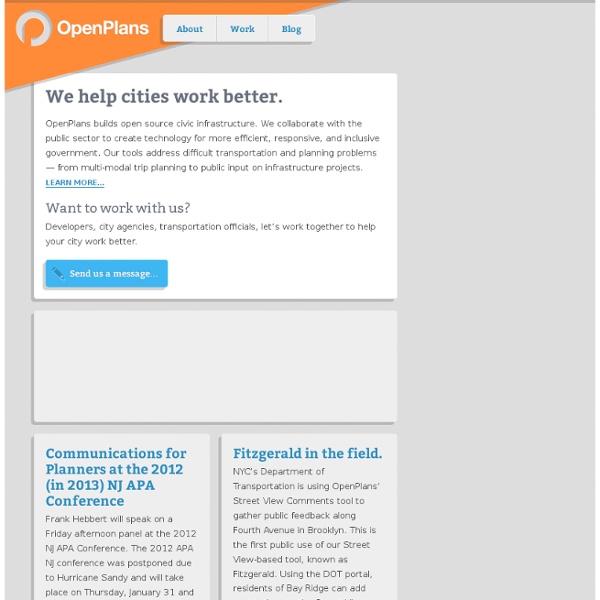



Transit App for iOS 6 and Beyond by OpenPlans With the announcement of iOS version 6, Apple has dropped Google Maps and with it, previously built-in support for travel directions via public transit. With your support, OpenTripPlanner Mobile, an open source application developed by OpenPlans will put transit back on the iPhone. Initially, we will offer coverage for almost all transit systems in North America (see coverage details below). The app will also add new features that Google Maps didn’t have, allowing users to combine walking, bikes, bike-share and transit together, finding the fastest and most efficient trips regardless of mode of transportation. The more funds we raise the more features and data coverage we'll be able to add. Your donation is tax-deductible and supports our work building software that makes cities better. The way we get around is changing. We’ve spent the last three years creating a trip planning engine, OpenTripPlanner, in partnership with transit agencies and software developers around the globe. Yes!
Carrot2 User and Developer Manual for version 3.9.0-SNAPSHOT Copyright © 2002-2013 Stanisław Osiński, Dawid Weiss Abstract This document serves as documentation for the Carrot2 framework. It describes Carrot2 application suite and the API developers can use to integrate Carrot2 clustering algorithms into their code. Carrot2 Online Demo: Carrot2 website: What is Carrot2 and what it is not Carrot2 is a library and a set of supporting applications you can use to build a search results clustering engine. Carrot2 contains two document clustering algorighms designed specifically for search results clustering: Suffix Tree Clustering and Lingo. Carrot2 is not a search engine itself, it does not have a crawler and indexer. In most cases your workflow with Carrot2 applications would be the following: Chapter 2 answers the questions most frequently asked on Carrot2 mailing lists, it can also serve as a question-based index to the rest of this manual. Tip or
Online Mind Mapping and Brainstorming - MindMeister Participatory Politics Foundation OLPC Wiki Background Materials - 6th Urban Research and Knowledge Symposium- Rethinking Cities: Framing the Future actuvisu Blog Black Duck Software Names Open Source Rookies of 2010 -- WALTHAM, Mass., Jan. 7 Black Duck Software. (PRNewsFoto/Black Duck Software) WALTHAM, Mass., Jan. 7, 2011 /PRNewswire/ -- From a personally-controlled social network to a mobile application that lets aid workers collect, sort and share information about children in emergency situations, open source software is meeting the needs of today's application developers, according to Black Duck Software, which today announced its 2010 open source 'Rookies of the Year' list. (Logo: ) Working from a list of thousands of new projects launched in 2010, Black Duck evaluated a project's popularity using a weighted scoring system that awards points for commit activity within a project, the number of developers involved, and the number of web sites linked to the project. Some key observations from this year's report include: The Black Duck Rookies of the Year for 2010 include: About Black Duck Software SOURCE Black Duck Software RELATED LINKS
YOUTH NOISE The Connected States of America | Visuals Visuals 1 2 3 This page provides our visualizations of the communities based on the anonymized, aggregated call and SMS connections. Please let us know what you think in the comment section below. The Connected States of America Through communication people across the United States (in fact around the world) are more connected with each other than ever. Federal IT Dashboard ACE - Ajax.org Code Editor